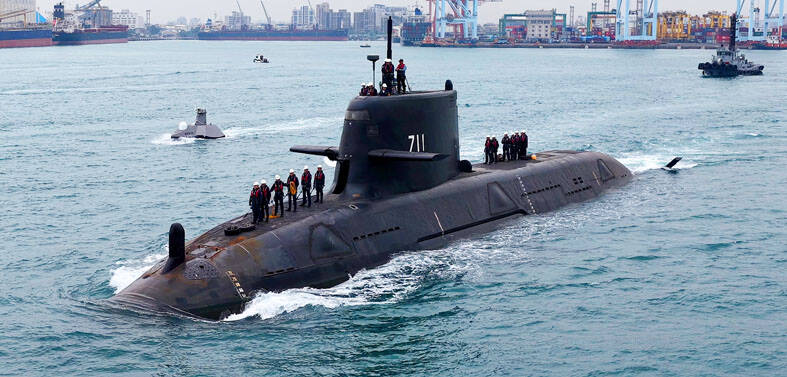Minister of Transportation and Communications Mao Chi-kuo (毛治國) yesterday said the ministry aims to increase the public transport usage rate from about 14 percent to 30 percent, with a goal of a 5 percent increase annually.
Mao made the statement at a transportation service seminar held by the ministry, where he delivered a speech titled “Vision of a Low Carbon Emission, Sustainable Transport Development.”
Meanwhile, the ministry has proposed that local governments consider raising their parking fees and charging a congestion fee to boost demand for public transport.
The Executive Yuan’s Energy Saving and Carbon Reduction Committee has ordered the transportation department to reduce carbon dioxide emissions to 34.5 million tonnes by 2020 and 29.7 million tonnes by 2025, but the best the department could do is halve the carbon dioxide emissions now being produced, Mao said.
A majority of the work needs to be done by the nation’s energy regulator, which must ensure a more efficient use of the energy, Mao said.
Oil prices rose 385 percent between 1995 and last year, but the consumer price index only rose 83 percent during the same period, he said, asking whether fuel purchases should still be subsidized, given the rising cost of crude oil.
“The question we have to ask ourselves is whether we are ready to take care of those who switch from private vehicles to public transport if the government no longer provides subsidies for gas purchases,” Mao said. “When that happens, a public transport environment must be in place, otherwise people will only switch from cars to motorcycles.”
To decrease reliance on small passenger vehicles, the ministry said it would promote increased use of carbon-free options, such as walking and bicycling.
Commuters should also be encouraged to carpool and use public transport at least once per week or per month, and to try to work from home using Web-based videoconferencing.
Mao said transportation had become the second-largest energy-consuming sector after industry, with as much as 13.9 percent of energy resources going into transportation last year, emitting about 35.3 million tonnes of carbon dioxide.
Statistics from last year showed that the carbon dioxide generated by highway transportation accounted for 94 percent of all transportation emissions.
Sixty-four percent of carbon dioxide emissions on highways came from small passenger vehicles.
Mao said a survey conducted last year found that the public transport usage rate was 13.9 percent. When those who walk or ride bicycles were added, the percentage was 26.7 percent.
New Taipei City (新北市), Keelung and Taoyuan County also have double-digit public transport usage rates, but the usage rate for other cities and counties varied between 3 percent and 8 percent.
The divide was also obvious when comparing public transport utilization in the nation’s five major municipalities.
Taipei and New Taipei City had public transport usage rates of 37.6 and 25.9 percent respectively, but those of Greater Taichung, Greater Tainan and Greater Kaohsiung were 6.8, 4.8 and 6 percent respectively.

SHIPS, TRAINS AND AUTOMOBILES: The ministry has announced changes to varied transportation industries taking effect soon, with a number of effects for passengers Beginning next month, the post office is canceling signature upon delivery and written inquiry services for international registered small packets in accordance with the new policy of the Universal Postal Union, the Ministry of Transportation and Communications said yesterday. The new policy does not apply to packets that are to be delivered to China, the ministry said. Senders of international registered small packets would receive a NT$10 rebate on postage if the packets are sent from Jan. 1 to March 31, it added. The ministry said that three other policies are also scheduled to take effect next month. International cruise ship operators

NUMBERS IMBALANCE: More than 4 million Taiwanese have visited China this year, while only about half a million Chinese have visited here Beijing has yet to respond to Taiwan’s requests for negotiation over matters related to the recovery of cross-strait tourism, the Tourism Administration said yesterday. Taiwan’s tourism authority issued the statement after Chinese-language daily the China Times reported yesterday that the government’s policy of banning group tours to China does not stop Taiwanese from visiting the country. As of October, more than 4.2 million had traveled to China this year, exceeding last year. Beijing estimated the number of Taiwanese tourists in China could reach 4.5 million this year. By contrast, only 500,000 Chinese tourists are expected in Taiwan, the report said. The report

Temperatures are forecast to drop steadily as a continental cold air mass moves across Taiwan, with some areas also likely to see heavy rainfall, the Central Weather Administration (CWA) said. From today through early tomorrow, a cold air mass would keep temperatures low across central and northern Taiwan, and the eastern half of Taiwan proper, with isolated brief showers forecast along Keelung’s north coast, Taipei and New Taipei City’s mountainous areas and eastern Taiwan, it said. Lows of 11°C to 15°C are forecast in central and northern Taiwan, Yilan County, and the outlying Kinmen and Lienchiang (Matsu) counties, and 14°C to 17°C

STEERING FAILURE: The first boat of its class is experiencing teething issues as it readies for acceptance by the navy, according to a recent story about rudder failure The Hai Kun (海鯤), the nation’s first locally built submarine, allegedly suffered a total failure of stern hydraulic systems during the second round of sea acceptance trials on June 26, and sailors were forced to manually operate the X-rudder to turn the submarine and return to port, news Web site Mirror Daily reported yesterday. The report said that tugboats following the Hai Kun assisted the submarine in avoiding collisions with other ships due to the X-rudder malfunctioning. At the time of the report, the submarine had completed its trials and was scheduled to begin diving and surfacing tests in shallow areas. The X-rudder,